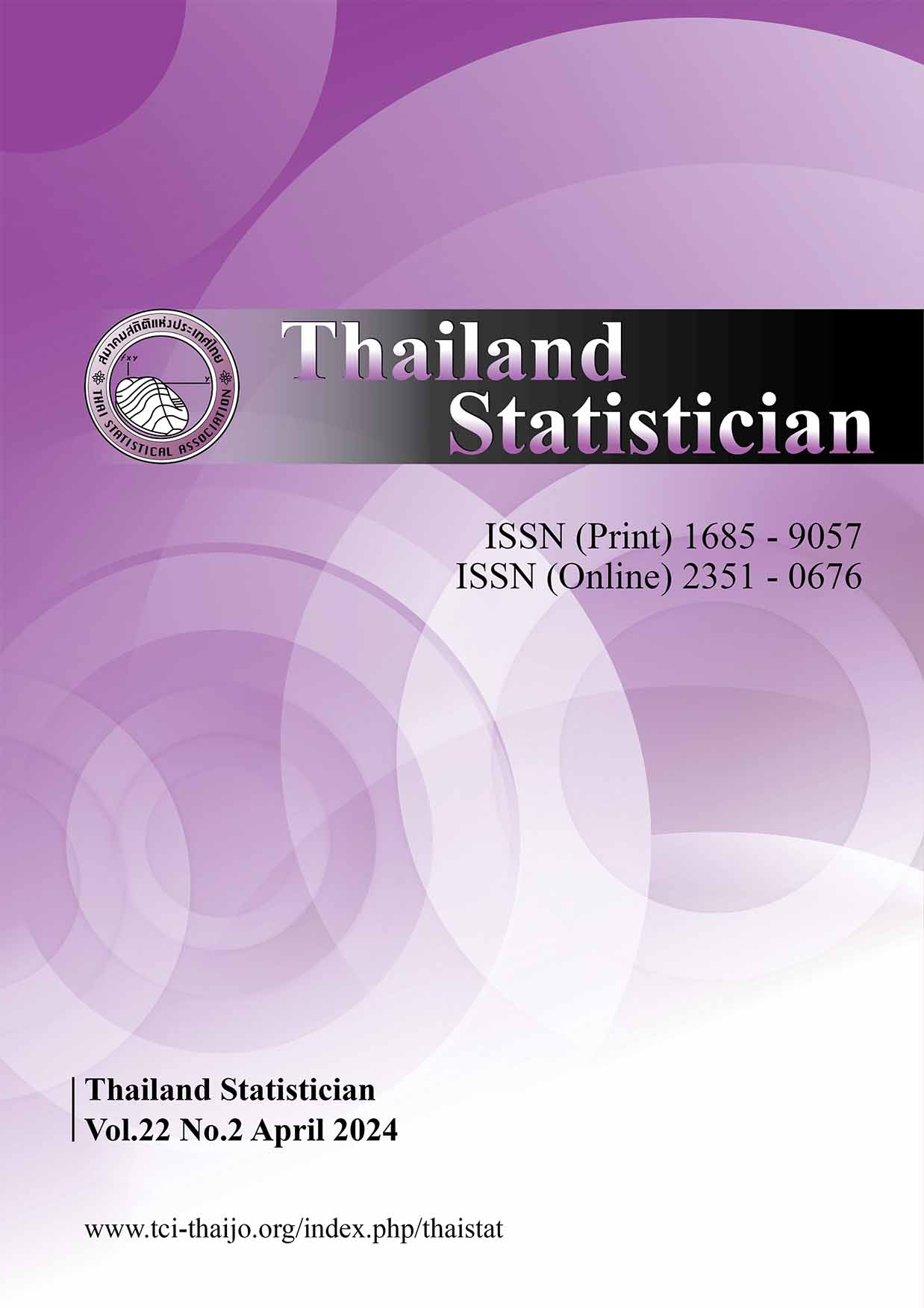A Simple Profile Likelihood-based Confidence Interval for the Risk Ratio in Rare Events Meta-analysis
Keywords:
Multiple studies, interval estimation, likelihood ratio, risk ratio, small eventsAbstract
Meta-analysis refers to a quantitative method for performing statistical analysis and summarizing results from independent studies, to draw overall conclusions. When the small number of events in individual studies are observed in one or both treatment groups, the classical meta-analysis can lead to perversion because of data sparsity. In this paper, two confidence intervals for the risk ratio in
rare events meta-analysis are proposed. They are derived through the profile likelihood ratio method. An extensive simulation study is performed to evaluate the performance of the proposed estimators. These are compared to the Wald-type and Mantel-Haenzel confidence intervals. By mean of simulations, our confidence interval is found to have a good performance in general cases in the study. It is also robust; in other words, regardless of the number of studies, its simulated coverage probability is close to the specified confidence coefficient with an acceptable average length. Real data analysis on epidemiology and transmission is conducted to assess the computational feasibility of the proposed methods.
References
Agresti A. Categorical Data Analysis. New York: John Wiley and Sons; 1990.
Bakbergenuly I, Hoaglin DC,Kulinskaya E. Methods for estimating between-study variance and overall effect in meta-analysis of odds ratios. Res Synth Methods. 2020; 11(3): 426–442.
Borenstein M, Hedges LV, Higgins JP, Rothstein HR. Introduction to Meta-Analysis. Chichester: Wiley; 2009.
Bohning D, Kuhnert R, Rattanasiri S. The Profile Likelihood for Meta-Analytic Studies with Binary Outcome. Boca: Chapman & Hall/CRC; 2008.
Bohning D, Mylona K, Kimber A. Meta-analysis of clinical trials with rare events. Biom J. 2015; ¨57(4): 633–648.
Bohning D, Sangnawakij P, Holling H. Confidence interval estimation for the Mantel-Haenszel estimator of the risk ratio and risk difference in rare event meta-analysis with emphasis on the bootstrap. J Stat Comput Sim. 2022; 92(6): 1267–1291.
Chu DK, Akl EA, Duda S, Solo K, Yaacoub S, Schunemann HJ. Physical distancing, face masks, ¨and eye protection to prevent person-to-person transmission of SARS-CoV-2 and COVID-19: a systematic review and meta-analysis. The Lancet. 2020; 395(10242): 1973–1987.
Cooper HM, Hedges LV, Valentine JC. he Handbook of Research Synthesis and Meta-Analysis. New
York: Russell Sage Foundation; 2009.
Doganaksoy N. A simplified formulation of likelihood ratio confidence intervals using a novel property. Technometrics. 2021; 63(1): 127–135.
Efthimiou O, Rucker G, Schwarzer G, Higgins JPT, Egger M, Salanti G. Network meta-analysis of ¨rare events using the Mantel-Haenszel method. Stat Med. 2019; 38(16): 2992–3012.
Ghalanos A, Theussl S. Rsolnp: A Package for General Non-Linear Optimization using Augmented Lagrange Multiplier Method. 2012 [cited 2023 Jan 6]; 2(2): 38-48. https://cran.r-project.org/web/packages/Rsolnp/.
Greenland S, Robins JM. Estimation of a common effect parameter from sparse follow-up data. Biometrics. 1985; 41(1): 55–68.
Gunhan BK, R ¨ over C, Friede T. Random-effects meta-analysis of few studies involving rare events. ¨Res Synth Methods. 2020; 11(1): 74–90.
Kaul S, Diamond GA. Rosiglitazone and cardiovascular risk: Nissen and Wolski 2010 updated meta analysis revisited. J Am Coll Cardiol. 2011; 57: 552–E552.
Manmana S, Iamsirithaworn S, Uttayamakul S. Coronavirus disease-19 (COVID-19). J Bamrasnaradura Infect Dis Inst. 2020; 14(2): 124–133.
Mantel N, Haenszel W. Statistical aspects of the analysis of data from retrospective studies of disease. J Natl Cancer Inst. 1959; 22(4): 719–748.
Murphy SA, van der Vaart AW. On profile likelihood. J Am Stat Assoc. 2000; 95(450): 449–465.
Noma H, Nagashima K. A note on the Mantel-Haenszel estimators when the common effect assumptions are violated. Epidemiol Methods. 2016; 5(1): 19–35.
Piaget-Rossel R, Taffe P. Meta-analysis of rare events under the assumption of a homogeneous treatment effect. Biom J 2019; 61(6): 1557–1574.
R Core Team. R: A Language and Environment for Statistical Computing. Vienna, Austria: R Foundation for Statistical Computing; 2022.
Royston P. Profile likelihood for estimation and confidence intervals. Stata J. 2007; 7(3): 376–387.
Schulze R, Holling H, Bohning D. Meta-Analysis: New Developments and Applications in Medical ¨and Social Sciences. Gottingen: Hogrefe & Huber; 2003. ¨
Stata Corp. Stata Statistical Software, Version 13.1. Texas: College Station; 2013. Sweeting MJ, Sutton AJ, Lambert PC. What to add to nothing? Use and avoidance of continuity corrections in meta-analysis of sparse data. Stat Med. 2004; 23(9): 1351–1375.
Wei JJ, Lin EX, Shi JD, Yang K, Hu ZL, Zeng XT, Tong TJ. Meta-analysis with zero-event studies: a comparative study with application to COVID-19 data. Mil Med Res. 2021; 8(41): 1–11.
Zabriskie BN, Corcoran C, Senchaudhuri P. A Comparison of confidence distribution approaches for rare event meta-analysis. Stat Med. 2021; 40(24): 5276–5297.
Zhu N, Zhang D, Wang W, Li X, Yang B, Song J, et al. A novel coronavirus from patients with Pneumonia in China, 2019. N Engl J Med. 2020; 382(8): 727–733.
Downloads
Published
How to Cite
Issue
Section
License

This work is licensed under a Creative Commons Attribution-NonCommercial-NoDerivatives 4.0 International License.




